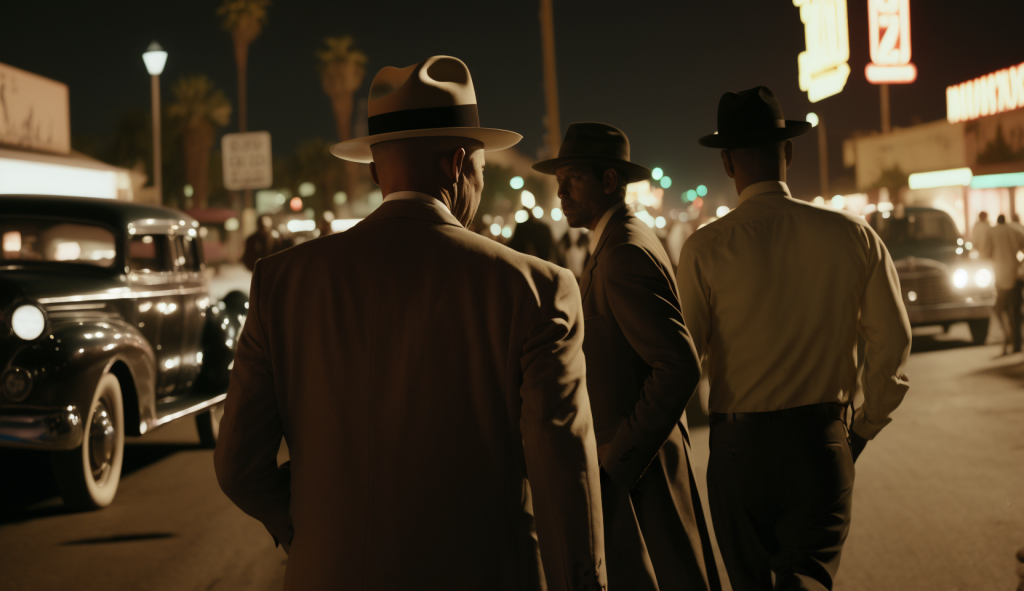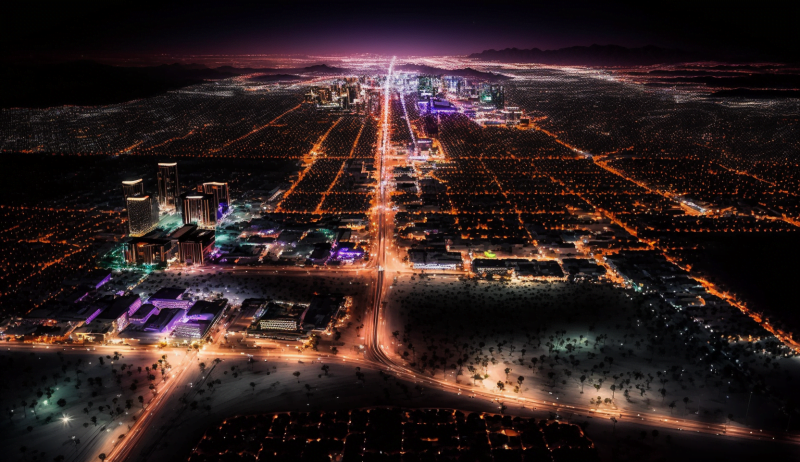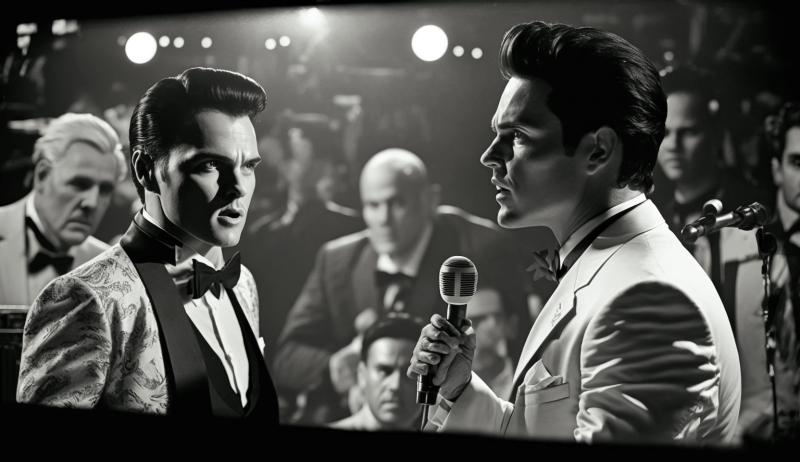Las Vegas, a city known for its bright lights, grand casinos, and endless entertainment, has a darker past lurking beneath its glamorous exterior. The Las Vegas mafia is a notorious criminal organization operating in the city from the 1940s to the 1980s. It was responsible for the most heinous crimes in the city’s history. This article will examine the history of the Las Vegas mafia, its rise to power, its notorious members, and its downfall.
The Origins of the Las Vegas Mafia
The Las Vegas mafia had its roots in organized crime in New York City. In the early 20th century, Italian immigrants in New York formed criminal organizations known as the Five Families. They controlled various illegal activities such as gambling, bootlegging, and prostitution. As the criminal enterprises grew in size and power, they expanded into other cities across the United States.
In the 1930s and 1940s, the Mafia became interested in Las Vegas. It was a small desert town with only a few thousand people then. The city had legalized gambling in 1931, which attracted a flood of tourists. This provided a lucrative opportunity for the Mafia to expand its operations.
Why did the Mafia go to Las Vegas?
The Mafia’s interest in Las Vegas was because of the city’s booming gambling industry. In the mid-20th century, Las Vegas experienced a rapid expansion of its gambling operations. New casinos were popping up all over the city. This allowed the Mafia to move in and establish a foothold in the industry.
The Mafia saw Las Vegas as a lucrative opportunity to expand their illegal activities, including illegal gambling, money laundering, and loan sharking. They were drawn to the city’s lax regulations and the potential for huge profits. They quickly began to infiltrate the gambling industry.
The key figure in the Mafia’s move into Las Vegas was Benjamin “Bugsy” Siegel, a notorious mobster who helped create modern Las Vegas. Siegel saw the potential for huge profits in Las Vegas and invested heavily in constructing the Flamingo Hotel and Casino, which opened in 1946. The Flamingo was a huge success and paved the way for other Mafia-owned casinos to open in Las Vegas.
The Mafia’s interest in Las Vegas was not just about money. They also saw the city as an opportunity to establish a power base and gain control over local politics and law enforcement. They used their influence in labor unions to gain control over the workforce in the city. The Mafia used their connections to politicians and law enforcement officials to protect their interests.
The Birth of the Las Vegas Strip
The construction of the Flamingo Hotel and Casino was a significant event in mafia history. The project was the brainchild of Benjamin “Bugsy” Siegel. He saw the potential for making a fortune in Las Vegas.
Siegel convinced several members of the Mafia to invest in the construction of the Flamingo. It was the first major resort on what would become known as the Las Vegas Strip. But Siegel’s success didn’t last. In 1947, Siegel was murdered, and many believe that the Mafia was behind the hit. The Flamingo, however, was a huge success and paved the way for constructing several other major resorts on the Strip.
The Rise of the Mafia
With the success of the Flamingo, the Las Vegas mafia began to invest heavily in the city’s gambling industry. They quickly took over all aspects of the industry, from construction to ownership to management. The Mafia used ruthless tactics; anyone who crossed them was dealt with swiftly and severely.
The most notorious member of the Las Vegas mafia was Tony “The Ant” Spilotro. The Chicago Outfit sent Spilotro to oversee their interests in the city. He quickly rose through the ranks of the Mafia and became one of its most feared enforcers. Spilotro was responsible for several high-profile murders in Las Vegas. His violent tactics made him a notorious figure in the city.
The Las Vegas mafia was also involved in other industries in the city, such as construction and hotels. They used their influence to secure contracts and deals. Anyone who refused to cooperate with them was met with threats and intimidation.
How did the Mafia control Las Vegas?
The Mafia’s grip on Las Vegas was like a vise, tight and unrelenting. In the early days of the city, the Mafia was able to infiltrate the gambling industry and establish a stranglehold for decades. They used their influence in labor unions and connections to politicians and law enforcement officials to keep their operations hidden and their profits rolling in.
The Mafia’s control over Las Vegas was not just about money; it was about power. They wanted to be the kingmakers of the city, and they would do whatever it took to protect their interests. They used intimidation and violence to keep anyone threatening their operations in line. The Mafia was not afraid to use deadly force to send a message.
The Stardust Casino was a perfect example of the Mafia’s influence in Las Vegas. Owned by notorious Mafia associate Frank “Lefty” Rosenthal, the Stardust was a front for organized crime activities, including money laundering, skimming profits, and illegal sports betting. Rosenthal used his position to run the casino as a cash cow for the Mafia. He was protected by a network of corrupt officials and law enforcement officers.
But the Mafia’s reign in Las Vegas would not last forever. As law enforcement agencies began to crack down on their activities, the Mafia’s control started to slip. High-profile investigations and prosecutions led to the dismantling of many of the Mafia’s operations in Las Vegas. The city shed its reputation as a haven for organized crime.
Which Mafia Controlled Las Vegas?

Several Mafia families had a hand in controlling Las Vegas over the years. The most prominent and well-known was the Chicago Outfit. Led by notorious mob boss Al Capone in the 1920s and ’30s, the Chicago Outfit continued to wield significant influence over organized crime in the United States for decades.
In the 1940s and ’50s, the Outfit expanded its reach into Las Vegas. Mobsters like Tony Accardo, Sam Giancana, and Paul Ricca established a presence in the city. They used their connections to the Teamsters Union to gain control over the city’s casino workers and ensure their interests were protected.
In the 1960s, the Outfit’s influence in Las Vegas came under threat from the arrival of the Mafia’s “Commission,” a group of bosses from various crime families who sought to exert more control over the organization. The Commission saw the Outfit’s control over Las Vegas as a threat to its power. They began to push for a more equitable distribution of the city’s profits.
Despite this pressure, the Chicago Outfit maintained a significant presence in Las Vegas well into the 1970s and ’80s. However, high-profile law enforcement crackdowns and internal power struggles within the organization weakened their control over the city. Today, while the Mafia still exists in some form, its influence over Las Vegas and other major cities has significantly diminished.
Where did Mafia eat in Vegas?
During their heyday in Las Vegas, the Mafia was popular for their love of good food and fine dining. Mobsters and their associates frequented many of the city’s top restaurants and eateries. Some of these establishments became legendary for their role in the Mafia’s control over the city.
One of the most famous Mafia haunts in Las Vegas was the Desert Inn, a luxurious resort and casino owned and operated by mob boss Moe Dalitz. The Desert Inn’s steakhouse, known as the 21 Club, was a favorite of the Mafia, with its cozy atmosphere and delicious cuisine. The restaurant was famous for its signature dishes, such as the “21” steak and the “21” hash browns. These were a particular favorite of the mobsters.
Another popular Mafia hangout was the Golden Nugget, a classic Las Vegas casino owned by Steve Wynn in the 1980s. The Golden Nugget’s restaurants, such as the Grotto and the Steakhouse, had top-quality cuisine and high-end clientele, which often included members of the Mafia.
Other popular Mafia spots in Las Vegas included the Sands Hotel and Casino, the Flamingo, and the Tropicana. Many of these establishments had secret back rooms and private dining areas where the mobsters could meet and discuss their business dealings away from prying eyes.
List of Las Vegas Mobsters
Like any criminal organization, the Mafia in Las Vegas had its fair share of notorious figures who made their mark on the city’s history. Here are the most popular Las Vegas mobsters:
Benjamin “Bugsy” Siegel helped establish Las Vegas as a gambling mecca. He was the driving force behind the Flamingo Hotel and Casino construction. Siegel was brutally murdered in his Beverly Hills home in 1947.
Anthony “Tony the Ant” Spilotro – An enforcer for the Chicago Outfit, Spilotro oversaw the Mafia’s interests in the 1970s. He was brutal in his tactics and involvement in organized crime activities. His own associates eventually murdered him in 1986.
Frank “Lefty” Rosenthal – A former sports handicapper, Rosenthal was a key figure in the Mafia’s control of Las Vegas casinos in the 1970s and 1980s. He was an expert in sports betting, leading to his close ties to organized crime figures. Rosenthal inspired Robert De Niro’s character in the movie “Casino.”
Meyer Lansky – A legendary mobster who played a key role in developing organized crime in America, Lansky had a hand in many of the Mafia’s operations in Las Vegas. He was a close associate of Benjamin Siegel and was involved in constructing the Flamingo Hotel and Casino.
Joseph “Joey” Aiuppa – A high-ranking member of the Chicago Outfit, Aiuppa was a major player in the Mafia’s activities in Las Vegas in the 1970s and 1980s. He was popular for his involvement in organized crime activities such as loan sharking and bookmaking.
Sam Giancana – A notorious Chicago mobster, Giancana was rumored to have had close ties to the CIA. He involved himself in numerous organized crime activities, including the Mafia’s operations in Las Vegas. Giancana was assassinated in his home in 1975.
Who is the godfather of Vegas?
Perhaps the most famous of these is Benjamin “Bugsy” Siegel, a notorious mobster who shaped the early days of Las Vegas. Siegel had the vision to build the Flamingo Hotel and Casino. It was one of the first casinos on the Las Vegas Strip that put the city on the map as a gambling destination. Although Siegel died in 1947, his legacy lives on in the many stories and myths surrounding his life and work in Las Vegas.
Another key figure in the history of Las Vegas is Howard Hughes. The billionaire businessman and aviator played a significant role in shaping the city’s modern landscape. Hughes bought several casinos in Las Vegas in the 1960s. He transformed the city into a glitzy, glamorous destination for high-stakes gambling and world-class entertainment.
Steve Wynn is another iconic figure in the history of Las Vegas, having built several of the city’s most famous properties in the 1980s and 1990s. Wynn’s casinos, including the Mirage, Treasure Island, and the Bellagio, helped to redefine the Las Vegas experience with their luxurious accommodations, top-tier restaurants, and world-class entertainment.
Finally, Sheldon Adelson, who passed away in 2021, was among the most influential figures in the modern Las Vegas casino industry. Adelson’s company, Las Vegas Sands, owns several of the city’s largest and most profitable casinos, including the Venetian and the Palazzo. Adelson’s vision for Las Vegas was opulence, extravagance, and larger-than-life experiences. His impact on the city is still will last for many years.
The Downfall of the Las Vegas Mafia
The Mafia’s reign in Las Vegas was eventually cut short. In the 1970s and 1980s, the FBI launched several investigations into the Mafia’s activities in Las Vegas. They were able to arrest and convict several high-ranking members of the Mafia, including Spilotro. The most notable case was the “Operation Strawman” investigation, which resulted in the conviction of several members of the Las Vegas mafia.
Today, Las Vegas is a different city. The gambling industry is heavily regulated, and measures have been implemented to prevent organized crime from gaining a foothold in the city. But the Las Vegas Mafia legacy still lingers, a reminder of a darker time in the city’s history.
Walking down the glittering streets of Las Vegas, it’s easy to forget the price paid for the city’s success. But we must remember that the Mafia’s control over Las Vegas was not just a footnote in the city’s history but a dark chapter that shaped its identity for decades. And as we enjoy the bright lights and endless entertainment of Las Vegas, we must never forget the lessons of the past, lest we repeat them in the future.
Conclusion
The history of the Las Vegas mafia is a cautionary tale of the dangers of organized crime. The Mafia’s greed and thirst for power led them to engage in heinous crimes and to use intimidation and violence to achieve their goals. Their influence in Las Vegas was significant, but ultimately, their downfall was inevitable.
While Las Vegas is still the Capital of gambling, online casinos have made things easier. Gamblers can now enjoy the Las Vegas thrill at home. With online games such as Vegas Classic, you can immerse yourself in the Vegas scene by playing this game all day long.




